Degradation of Phenolic Compounds in Coal Gasification Wastewater by Biofilm Reactor with Isolated Klebsiella sp.
Fang Fang,Hong-Jun Han,Chun-Yan Xu,Qian Zhao,Ling-Han Zhang
(State Key Laboratory of Urban Water Resource and Environment,Harbin Institute of Technology,Harbin 150090,China)
1 Introduction
Coal gasification is a promising technology for supplying naturalgasin China in the nextfew decades[1].However,coalgasification wastewater (CGW)containsamountoftoxicandrefractory components,such as phenolic compounds,polycyclic aromatic hydrocarbons, ammonia, cyanide and thiocyanate.Among them,phenolic compounds are the main organic components in CGW,which occupy over 60%of total organic carbon[2-3].It can directly harm the health of humans and aquatic animals[4],and also have negativeeffecton bio-system,forexample,inhibiting growing, nitrifying[5-6], thiocyanatedegrading[7-9]and phenol-degrading itself[10-11].The inhibition causes along acclimation,which isa common problem for CGW treatment.Base on these cases,achieving effective phenol-degrading bacteria (PDB)seem to be critical for the bio-system[12-14].
The degradation of phenlic compounds by PDB has been investigated for decades.Biofilm reactor,because of biomass stability and easy operation,is always selected to investigate the degradation of phenolic compounds[15-16].It formed by pure culture presents stronger resistance to phenolic compounds[17]and more stability with continuous feed[18].Klebsiella sp.,one of the PDB,has been investigated for bioremediation of phenolic compounds in soil and water.The theories about Klebsiella sp.degrading phenolic compounds can be divided into two types.The first theory declares that the Klebsiella sp.cannot use phenolic compounds as the sole carbon source.During investigating metabolic pathway of aminophenol by Klebsiella pnuemoniae,Boopathy and Melancon found that aminophenol was only oxidatively deaminated to phenol and not further metabolism was detected[19].In the experiment of Adav et al.,Klebsiella pneumoniae strain IEDC 78 only appeared in the granules when pyridine combined with phenol was utilized as carbon sources[20].The second theory announces that Klebsiella sp.can directly use phenolic compounds as carbon resource.Khaled testified the phenol degradation capability of Klebsiella oxytoca strain by determined phenol removal and cell densities,the results showed that the strain can tolerate phenol concentration up to 400×10-6[21].Kadakol isolated one Klebsiella sp.strain from soil which was capable of degrading carbofuran phenol[22].Anyhow,Klebsiella sp.seems to be a tough strain for degradation of phenolic compounds.
However,there is less information on Klebsiella sp.applied in biofilm reactor to the removal of the total phenols(TP)in CGW.In this paper,the ability to degrade phenolic compounds was evaluated in two levels:the degradation rate of phenolic compounds and phenoloxidase activity.One biofilm reactor with polythene as carriers and the isolate as the only culture was used to treat synthetic and real CGW.The removal efficiency of the biofilm reactor was investigated.
2 Materials and Methods
2.1 Experiment Set-up
Biofilm reactor was made of plexiglass,40 cm in height with an internal diameter 4 cm and 2 L working volume(Fig.1).Polythene suspended carriers(PSC,supplied by Dalian Yu Du Science&Technology Co.,Ltd in China)was installed in the middle of the reactor with a volumetric ratio of 1∶2.
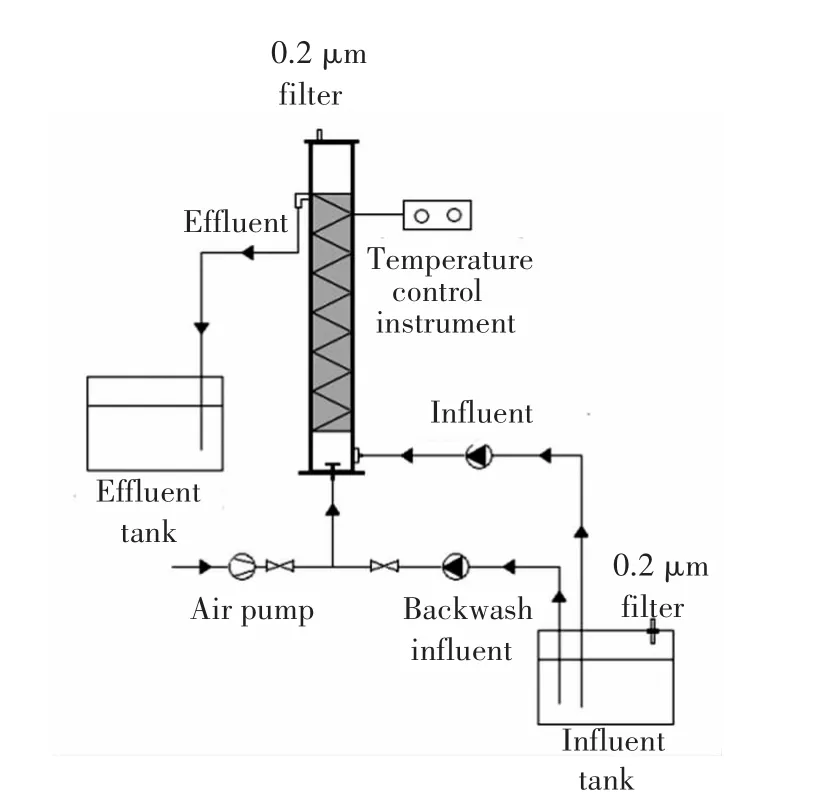
Fig.1 Schematic diagram of biofilm reactor
2.2 Biofilm Reactor Startup
The whole startup period was last for 30 d,when the influent concentration of TP was maintained at 200 mg/L.ConstantremovalofTP indicated a satisfactory formation of biofilm.The dissolved oxygen (DO),pH and temperature were kept at 2-4 mg/L,7-7.5 and 35℃,respectively.
2.3 Characteristics of Synthetic and Real Coal Gasification Wastewater
The components of synthetic CGW were showed in Table 1.The dosage of macro elements was defined as a dosage for 1 L distilled water.The ratio of phenolic compounds was inoculated as mass ratio.
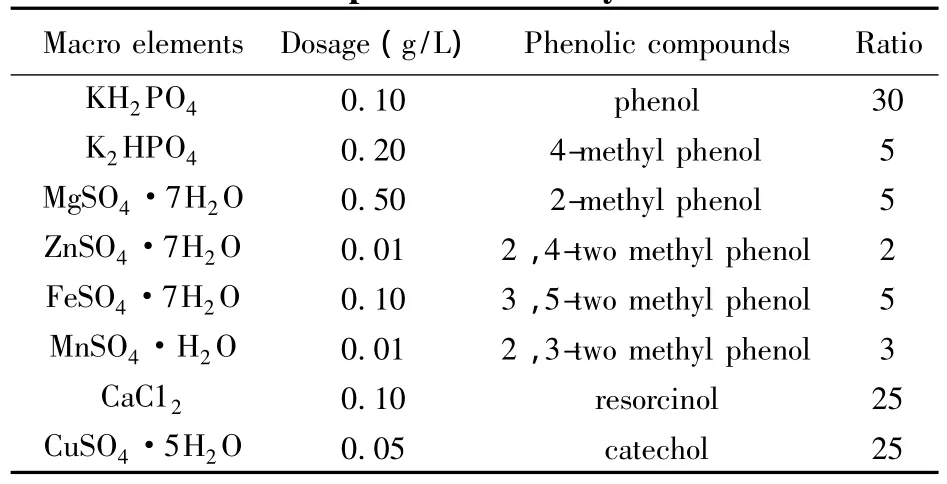
Table 1 Components of the synthetic CGW
Real CGW was collected from a CGW treatment plant in northeast,which had been pretreated by ammonia striping and phenols solventextraction processes.The characteristics of real wastewater were 2580.7-2710.9 mg/L of COD,355.4-403.6 mg/L of TP,182.1-259.0 mg/L of NH4+-N and pH 7-7.2.
2.4 Phenol-degrading Bacteria for Biofilm Reactor
2.4.1 Seed sludge and culture media
The seed sludge was collected from a CGW treatment plant in northeast which had been operating for over two years.The sludge was grey-black with good settlement property.The volatile suspended solids (VSS)in the reactors were around 3000 mg/L.
The mineral culture medium(MCM)contained the following components(g/L):KH2PO4,0.1; K2HPO4,0.2;MgSO4·H2O,0.2;FeSO4·H2O,0.1;MnSO4·H2O,0.1;CaCl2,0.2;K2HPO4,0.5;KH2PO4,0.5;(NH4)2SO4,0.45;NaCl,0.1; sucrose,2,orphenoliccompoounds(added as experimentaldesigned). The beef-extract-peptone culture medium(BCM)containing(g/L):beef extract,5;peptone,10;NaCl,5;agar,20.
2.4.2 Isolation of phenol-degrading bacteria
In the experiment,the phenolic mixture(PM) wascomprised ofphenol,4-methylphenol,3,5-dimethyl phenol and resorcinol(30∶10∶10∶25 (massratio),accordingto GC-MS analysisof GCW[2-3,23]).Firstly,the seed sludge was washed by the MCM(without phenolic compounds)three times.Each time,the mixture of sludge and MCM was settled for 30 min.Then,10 mL of the sediment was added to 100 mL of the MCM with 100 mg/L PM,which was incubated at 35℃ and 200 r/min until the PM exhausted.Afterward,10 mL ofthe suspension transferred to the MCM with more PM(200 mg/L),incubated at 35℃ and 200 r/min until the PM exhausted.This procedure was repeated until the concentration of the PM reached 600 mg/L.
2.4.3 Phenol degradability of the isolate
One colony of the isolate was incubated at 35℃and 150 r/min until optical density(OD600)0.2-0.25 mL of this bacterial suspension was mixed with 10 mL MCM(with different phenolic compounds as carbon source)in 100 mL Erlenmeyer flask and incubated at 35℃ and 150 r/min for 24 h.OD600and phenoloxidase activity were measured every 2 h.
2.4.4 Adhesive ability of the isolate
MCM with PM of 600 mg/L was fed into the biofilm reactor at a steady-state flow rate of 7.5 mL/min.The DO and temperature were kept at 2-4 mg/L and 35℃,respectively.Ten days later,bacterial attachment was analyzed by scanning electron microscopy(SEM).
2.4.5 Temperature,initial pH and initial concentration of phenolic compounds tests
Wide-mouth jar was adopted in this experiment.The jar was sealed with a rubber stopper which was fixed with a short air outlet tube above the liquid level and an air inlet tube leading to the bottom of the jar.In order to avoid living contaminants,both tubes were fixed with 0.2 μm filter.Before the experiment,50 g carriers with biofilm were transferred to the jar with 200 mL MCM.The effect of different temperature (20,25,30,35,40,45 and 50℃)and initial pH (pH 5.0,5.5,6.0,6.5,7.0,7.5,8.0 and 8.5) on the biofilm were carried out atan initial concentration of PM of 600 mg/L.In the tests of initial concentration,the concentrations of PM were carried out on a wide range of 200 to 900 mg/L.The concentration of PM and phenoloxidase activity were measured every 2 h.
2.5 Experiments of Biofilm Reactor Fed with Synthetic CGW
2.5.1 Effect of influent concentration of TP
The degradation of phenolic compounds by the biofilm reactor was investigated through stepwise increasing the concentrationsfrom 100 to850 mg/L.During the experiments,the backwashing process was operated once a day,and the effluent concentration ofTP and the phenoloxidase activity were measured every 8 h.
2.5.2 Effect of influent flow rate
In order to investigate the effect of influent flow rate on the performance of the biofilm reactor,three reactors(reactor A,B and C)were operated in parallel.The concentrations of TP were controlled at 450,550 and 650 mg/L,respectively.The effluent concentration of TP and the phenoloxidase activity were measured every 12 h.
2.5.3 Self-recovery capacity of the biofilm reactor
The reactor was operated at a steady-state flow rate of 3.5 mL/min and backwashing frequency once per day.Firstly,the influent concentration of TP was controlled at 200 mg/L, when the effluent concentration of TP and the phenoloxidase activity were identified as control level.The recovery time was defined as the time between the action of recovery and degrading rate of phenolic compounds of control level.After operating for 24 h and backwashing 10 min,the reactor wasfed with synthetic CGW ofinfluent concentration of TP 350 mg/L.24 h later,the reactor was drained off,and the influent concentration of TP 200 mg/L were fed until the reactor recover to the control level.Afterwards,the influent concentration of TP was increased to 450 mg/L.In order to investigate the highest influent concentration of TP the biofilm reactor could resist,the procedure above was repeated till the influent concentration of TP was stepwise increased to 850 mg/L.
2.6 Experiments of Biofilm Reactor Fed with Real CGW
The real CGW was diluted by tap water according to the experiment.The COD and TP concentration was elevated to a higher level at the beginning of next phase,with duration and average values listed in Table 2.The DO and HRT were controlled at 2-4 mg/L and 60 h respectively.

Table 2 Feed for biofilm reactor in different phase
2.7 Analysis Methods
Bacterial growth was measured spectrophotometrically at 600 nm by using a UV-spectrophotometer.Morphological characteristics of the typical colony were observed under daylight.For cell morphology observation under atomic force microscope (AFM),one colony should be diluted with distilled water on the glass slide and then was dried in aseptic condition.Length of the cell was analyzed by software Nanoscope 5.30r3sr3.
The concentration of phenolic compounds was measured according to Standard Methods[24].During the GC-MS analysis,the pretreatment of waster sample was described in the previous paper[3].
第三,以国内消费市场为基础,奠定自身发展的有力土壤。事实上,现阶段的消费市场已经证明了我国消费能力的水平。下一步要努力在刺激国内消费市场上形成新的突破。具体而言,一方面变更中国制造为中国创造,不断的提升我国产品在国际商品市场上的竞争力,将国内的消费力留在国内;另一方面要根据世界财经形式的变化进行合理且适当的资本的输出,将更多的国家纳入到中国“一体化经济圈”的治理范畴,形成更为稳固的合作态势。
The process of the phenoloxidase activity was detailed as follows.The samples were added in 15 mL 50 mmol/L sodium phosphate buffer(pH 7.0),which was centrifuged at 5000 r/min for 15 min.Then the sediment was suspended in 1 mL 50 mmol/L lysozyme (pH 7.0)and centrifuged at 12000 r/min(4℃)for 15 min.The supernatant,referred as crude enzyme,was maintained at 4℃.90%saturated(NH4)2SO4was added to the crude enzyme preparation and stirred for 30 min,which was placed at 4℃ over night.Then the mixture wascentrifuged at 12000 r/min for 30 min.The precipitate was dissolved in 0.025 mol/L phosphate buffer(pH 7.2)and dialyzed in 10 mmol/L Tis-HCl(pH 8.3)for18 h.The phenoloxidase activity was measured by the rate of phenol oxidation.The mixture of 0.5 mL 0.1 mol/L phenol and 3 mL 0.1 mol/L acetate buffer solution(pH 5)was heated at30℃ for 30 min.0.1 mL diluted enzyme preparation was added to the preheated mixture.After reacting for 3 min,the absorbance was measured at 410 nm.
2.8 DNA Extraction and DGGE
To extract the DNA,25 mL cell suspension samples were centrifuged at 5000 r/min,4℃ for 10 min.Totalgenomic DNA from the phenoldegrading bacteria was extracted via enzymatic lysis. 9.5 mL of TE buffer(10 mM Tris·HCl at pH 8.0,0.1 mM EDTA at pH 8.0),0.5 mL 10%SDS and 100 μL of Proteinase K(20 mg/ml)were added to the sample,which was incubated at 37℃ (225 r/min) for 30 min.The sample added with 1.5 mL of NaCl (5 mol/L)was incubated at 65℃ for 30 min,which was then ground until it thawed.A mixture of organic solvents(phenol:chloroform:isoamyl alcohol=25∶24∶1,v∶v∶v)was added to the sample with equal volume,which was centrifuged at 12000 r/min for 10 min.The supernatantextracted with chloroform: isoamyl alcohol(24∶1,v∶v)was centrifuged at 12000 r/min for 10 min.An equalvolume of isopropanol(pre-cooling at-20℃)was added to the supernatant.The DNA was precipitated by centrifuged at 12000 r/min for 10 min.The DNA sediments were washed with absolute alcohol and centrifuged at 12000 r/min for 10 min.The dried DNA sediments were resuspended in TE buffer of 100 μL.Partial 16S rDNA amplification wasperformed with primersT:5'-AGAGTTTGATCMTGGCTCAG-3'andM13R7:5'-CGGYTACCTTGTTACGACTT-3'.ThePCR reaction system contained 5 μL of 10×pfu buffer;8 μL of template DNA;2 μL of primers(10 pM);4 μL of dNTP mixture at 2.5 mM;50 μL of sterilized distilled water.PCR conditions were as follows:denatured at 94℃ for 40 s,primer annealing at 55℃ for 30 s,and chain extension at 72℃ for 3 min with an additional extension time of 10 min on the final cycle,for a total of 30 cycles.The bands were excised,amplified and sequence.The amplified 16S rDNA was ligated into pMD-18T vector.The recombinantplasmidswere transformed into competent E.coli TG1,and colonies containing plasmids were identified by blue-white color selection on agar plates.Then the positive colonies were sequenced.The sequence data of 16S rRNA gene was submitted to the GenBank sequence database.
3 Results and Discussion
3.1 Properties of the Isolate
The isolated was named as FF2.As shown in Figs.2(a)and 2(b),the colonies of FF2 on the culture plate has the same morphological characteristics of milky yellow in daylight,round shape,smooth surface and similar diameter.Control phase image of the cell shows surface features on the scale of 400-800 nm(Fig.2(c)).A smooth and regular surface structure rounded the cell is observed(Fig.2(c)),which is different from those rough EPS structure[25].So it might be capsule,which contributes to adhesive ability of cell.Figs.2(d)and 2(e)show the mean surface height of FF2 is 524.82 nm×632.66 nm.The related sequences of FF2 obtained from the GenBank database were aligned and constructed phylogenetic trees with MEGA4.1(Fig.3).The analysis of 16S rRNA gene sequence identified that the strain FF2 belonged to Klebsiella sp.The 16S rRNA gene sequence was deposited in the GenBank database under accession no.JN987862.
The samples for adhesive ability test were selected randomly.As shown in Fig.4,no variation in width was found in the samples.Comparing length of cells on the samples,it was found that cell C just finished a life cycle;cell A was in the phase of cellular length increasing;cellular division of cell D had just initiated; both cell wall and cytoplasmic membrane of cell B were divided.These results indicated that FF2 could attach and grow on PSC in the presence ofphenolic compounds.The size of cell attached on PSC which had proved to be FF2 by the result of 16S rRNA genes was larger than the cell incubated with sucrose as carbon source(Fig.2(c)).The cell surface and especially the cytoplasmic membrane are the major targets for the toxic.Thus,it can be explained that the cells adopted the way of reduction of the relative surface to response to the toxic of phenolic compounds[26].
As shown in Fig.5,the growth of FF2 exhibited by increasing in OD600was observed up to certain concentration of phenolic compounds,such as phenol of 1000 mg/L,resorcinol of 800 mg/L,4-methyl phenol and 3,5-dimethyl phenol of 500 mg/L.However,further increase in the concentration of phenolic compounds would cause reduction in OD600.Fig.5 also shows that the phenoloxidase activity is positive to cell density.Phenol was the optimum inducer for phenoloxidase production,followed by resorcinol,the third was 4-methyl phenol,the forth was 3,5-dimethyl phenol.Based on these results,further investigation was carried out to testify the degradation of phenolic compounds by FF2.As shown in Table 3,the main organic components in the medium were all non-toxic and were easier to be utilized by microorganism,such as acetaldehyde,pentenal and ethyl acetate.Hence,the biochemical oxygen demand was increased through incubating the isolate with phenolic compounds as sole carbon resource.
3.2 Optimum Conditions for Degradation of Phenolic Compounds
As shown in Fig.6,the degradation of phenolic compounds and phenoloxidase activity were improved with the incubation pH increased from 5.5 to 7.5 and decreased with further increase in the incubation pH,indicating that the optimum pH was 7.5.At pH 7 and pH 7.5,phenoloxidase activity decreased sharply at 24 h and 22 h,respectively.In initialphenol concentration tests,when TP concentrations were lower than 600 mg/L,the similar phenomena also appeared.It can be explained by the shortage of enzyme inducer when phenolic compounds were exhausted.
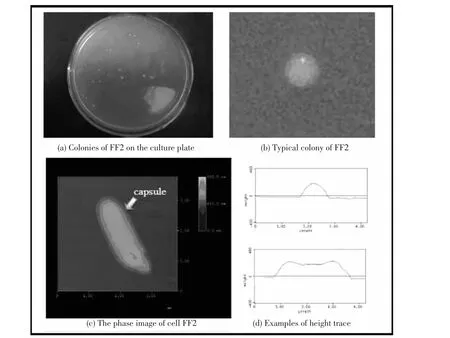
Fig.2 Morphological characteristics of FF2
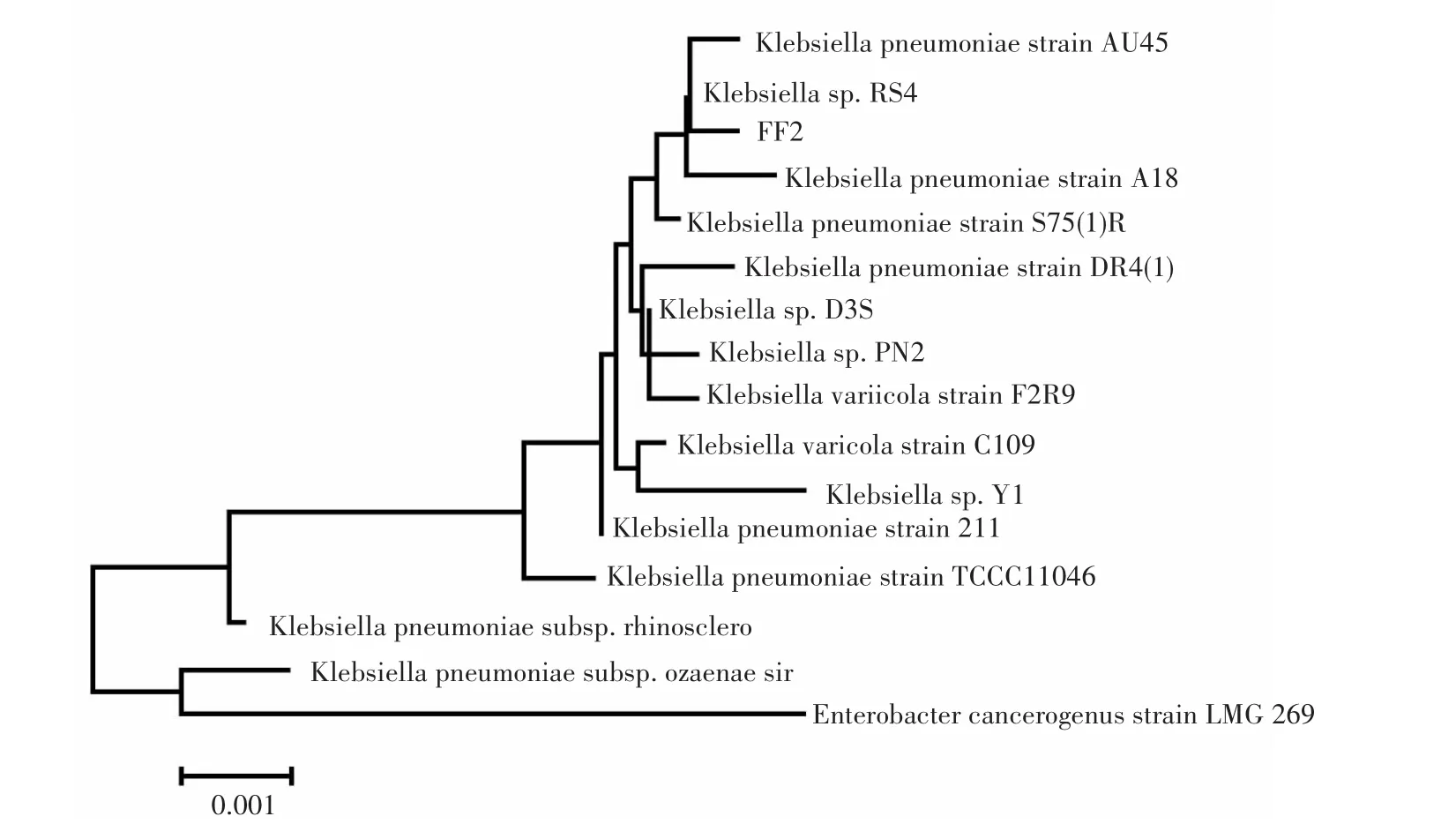
Fig.3 Phylogenetic tree of colonies based on 16S rRNA sequence

Fig.4 Samples observation under SEM(Cell A,B,C and D were represented FF2 in different growth phase)
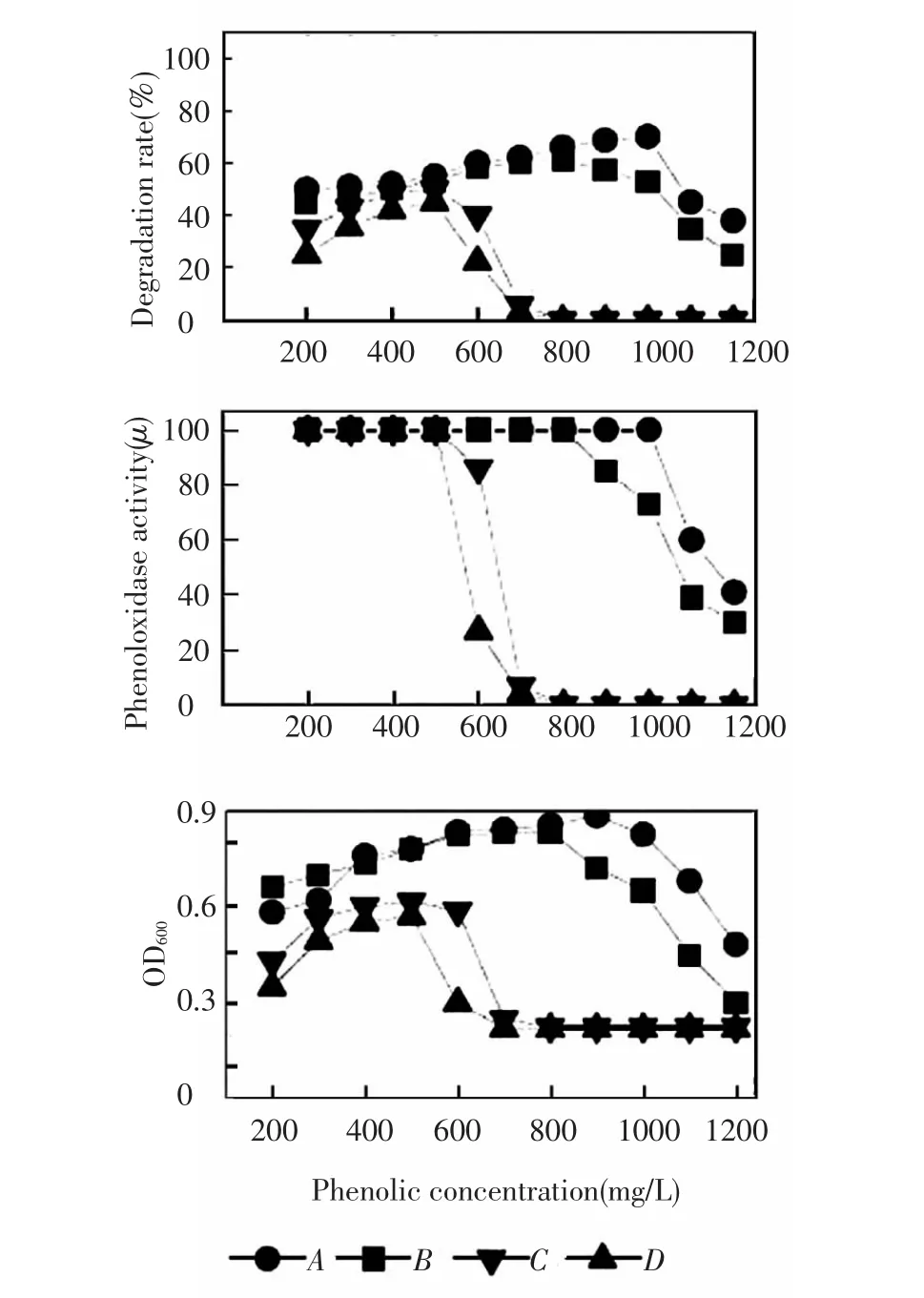
Fig.5 Growth,phenoloxidase activity of FF2 incubated with differentphenolic compoundsascarbon source.A,B,C and D indicated:FF2 incubated with phenol,resorcinol,4-methyl phenol and 3,5-dimethyl phenol as carbon source respectively
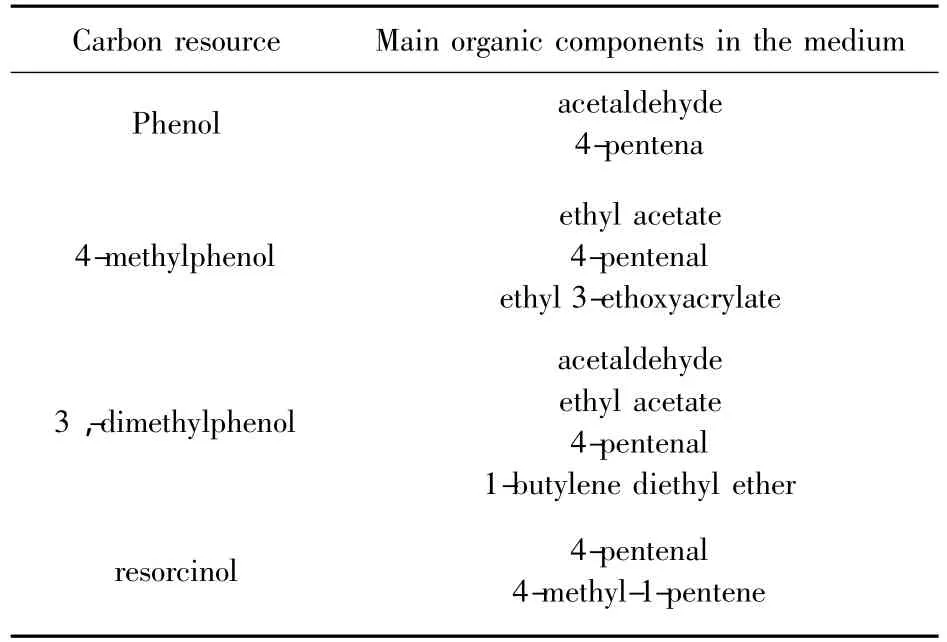
Table 3 Main organic components in the medium
As shown in Fig.7,the degradation of phenolic compounds and phenoloxidase activity were improved with the incubation temperature increased from 15℃ to 35℃ and decreased with further increase in the incubation temperature. When the biofilms were incubated at 45℃ for 18 h,the removal of phenolic compoundswasterminated and the phenoloxidase activity approached zero due to protein denaturation[27].Itwasobviousthatthe optimum temperature for degradation of phenolic compounds was 35℃.
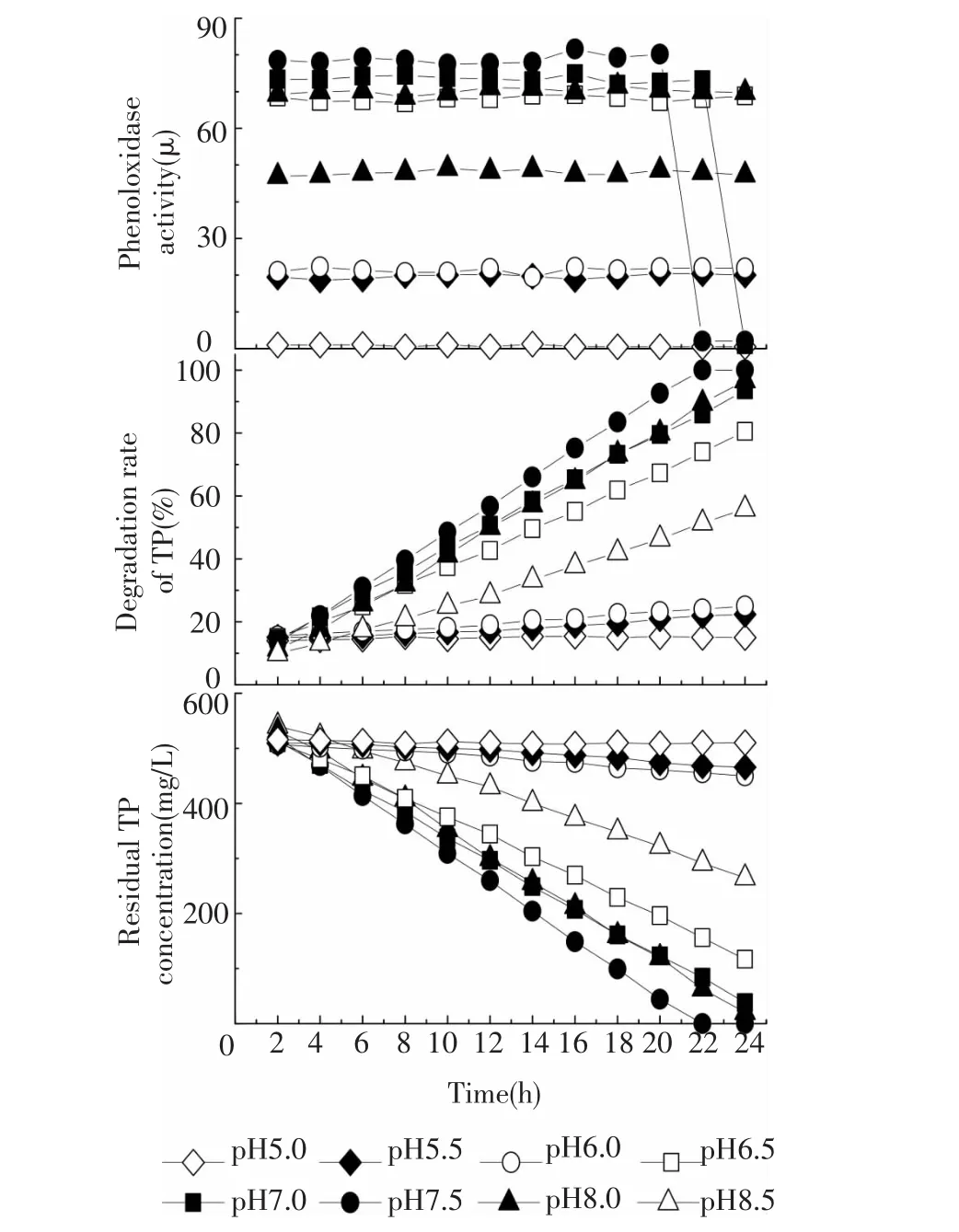
Fig.6 Effect of pH on degradation of phenolic compounds and phenoloxidase activity

Fig.7 Effect of temperature on degradation of phenolic compounds and phenoloxidase activity
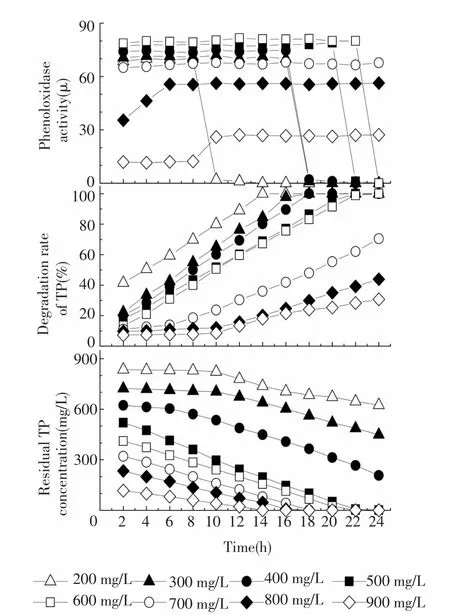
Fig.8 Effect of initial TP concentration on degradation of phenolic compounds and phenoloxidase activity
3.3 Performance of Biofilm Reactor Fed with Synthetic CGW
The performance ofthe reactoroperated at different influent concentrations of TP is showed in Fig.9.Within the range of concentrations between 100 and 250 mg/L, phenolic compounds could be completely removed.Further increase in the influent concentration of TP caused the degradation rate of TP and the phenoloxidase activity reduction.The lag phase of degradation appeared at the influent TP concentration of 450 mg/L.When the influent TP concentration was more than 750 mg/L,the removal of phenolic compounds was stopped.
The experiment of optimal conditions for degradation of phenolic compounds(as described in Clause 2.2)were carried out with the mixture of phenol,4-methyl phenol,3,5-dimethyl phenol and resorcinol. In Clause 2.3, the synthetic CGW contained eight kinds of phenolic compounds,which resulted in stronger inhibition to the biofilm.Thus,the performance of the biofilm reactor fed with synthetic CGW was weakened.
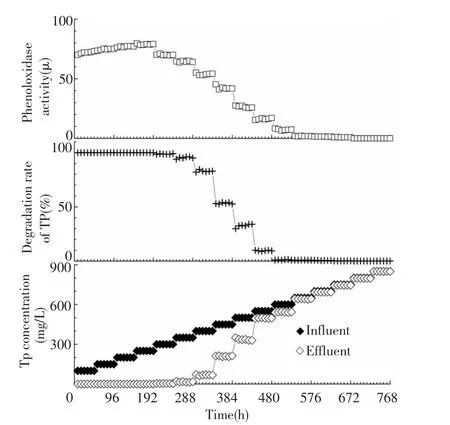
Fig.9 Effectofinfluentconcentration ofTP on performance of biofilm reactor fed with synthetic CGW
The performance of the reactor A which was fed with influent TP concentration of 450 mg/L(Fig.10) was significantly enhanced by reducing influent flow rate from 3.3 mL/min to 2.3 mL/min.When the influent flow rate was less than 1.1 mL/min,no phenolic compounds was detected in the effluent and the phenoloxidase activity was kept at stable values.However,the positive effect of reducing influent flow rate on the biofilm reactor would be weakened with the increase of the influent TP concentration(i.e.,at influent TP concentration of 650 mg/L,although influent flow rate had been reduced to 0.9 mL/min,the TP degradation rate of the reactor C was less than 22.3%).
Asshown in Fig.11,when the influent concentration of TP were ranged from 350 mg/L to 650 mg/L,the biofilm reactor could recover to the control level in 24 h.Even though the influent TP concentration reached 750 mg/L,the recovery time was no more than 72 h.However,ifthe influent concentration of TP was further increased to 850 mg/L,after the recovery for 256 h the effluent concentration of TP was still more than 143 mg/L.Amount of the biofilms detached were sharply increased in the effluent tank.During this period,the degradation rate and phenoloxidase activity increased slowly,which implied that few survives were still alive.According to the data above,phenoloxidase activity of these survives should return to the control level in a short period of time(no more than 72 h),but the phenoloxidase production was still limited at 672 h.Therefore,it was speculated that the biofilms still attached to PSC were composed of active cells(those survives)and inactive cells.
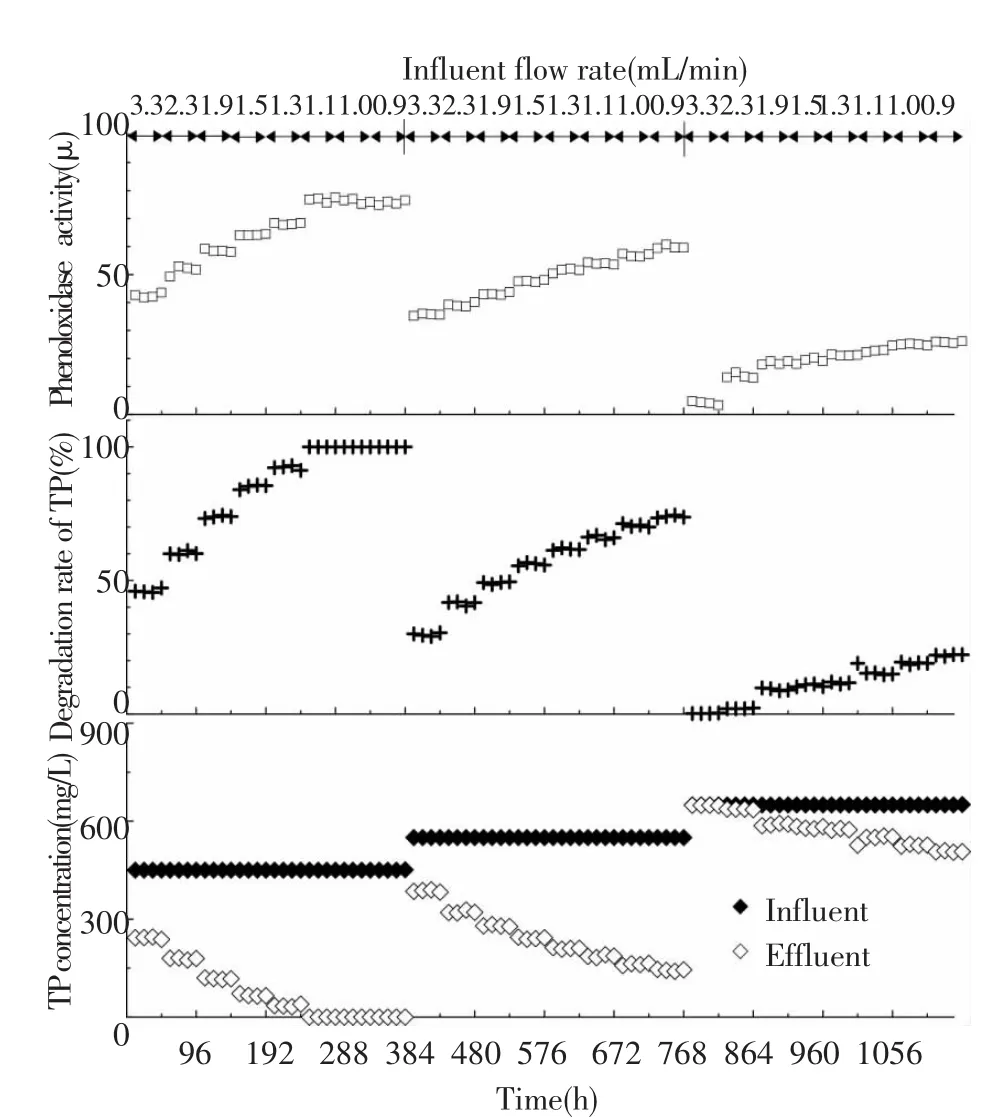
Fig.10 Effect of influent flow rate on performance of biofilm reactors fed with synthetic CGW
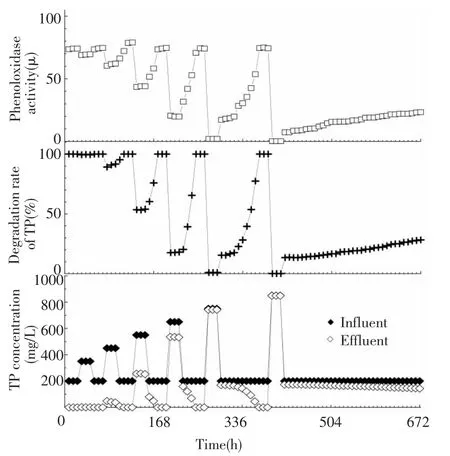
Fig.11 Recovery of biofilm reactor fed with synthetic CGW
3.4 Performance of Biofilm Reactor Fed with Real CGW
As shown in Fig.12,the removal of COD and TP were decreased with the elevation of the feed.The removal of COD and TP were decreased from 14.5%to 9.2% and 80.0% to 70.1%,with the influent concentrations ofCOD and TP increased from 441.1 mg/L to 600.7 mg/L and 79.2 mg/L to 90 mg/L.Further increased in the concentrations of COD and TP to 896 mg/L and 160 mg/L,the performance of the biofilm reactor was significantly inhibited.After lag time of 8 d,the removal of COD and TP were 6.6% and 45.3% respectively.The results indicated that the biofilm reactor was not so effective for the COD removal.It might be explained that the metabolism of phenolic compounds by the isolate was not completely(as shown in Table 3).However,the isolate improved the BOD/COD of the CGW(data not shown).Besides phenolic compounds,the real CGW contained much more toxic and refractory components such as polycyclic aromatic hydrocarbonsammonia, cyanide and thiocyanate.Thus,it seemed that pure culture of the isolate was not appropriate for treatment of real CGW,which should be further discussed in the future.
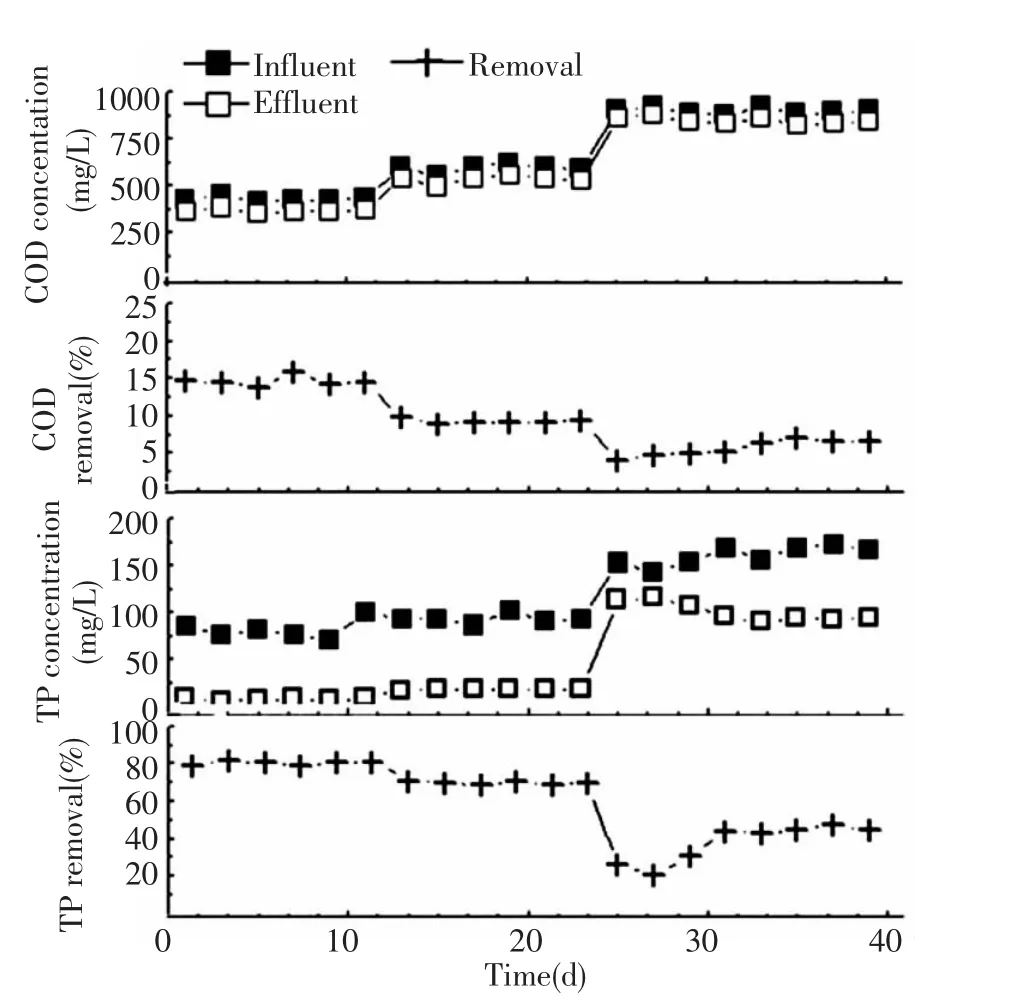
Fig.12 Organic removal of real CGW by the biofilm reactor
4 Conclusions
One strain, capable of degrading phenolic compounds,was isolated from coal gasification plant.The identified Klebsiella sp.can adhere to and grow on the surface of PSC in thepresence ofphenolic compounds.The optimum temperature and pH for degradation of phenolic compounds were 35℃and 7.5 respectively.In the experiment of synthetic CGW,the biofilm reactor(formed by the isolate)could tolerate the concentration ofphenolic compounds up to 750 mg/L.The isolate was also effective in the real CGW treatment.Consequently,the isolate might be effective in bioaugmentation treatment of CGW.
[1]Wang W,Han H J.Recovery strategies for tackling the impact of phenolic compounds in a UASB reactor treating coalgasification wastewater.Bioresourse Technology,2012,103(1):95-100.
[2]Wang W,Han HJ,Yuan M,et al.Enhanced anaerobic biodegradability of real coal gasification wastewater with methanol addition.Journal of Environment Science,2010,22(12):1868-1874.
[3]Wang W,Han H J,Yuan M,et al.Treatment of coal gasification wastewater by a two continuous UASB system with step-feed for COD and phenols removal.Bioresource Technology,2011,120(9):5454-5460.
[4]Jennings J G,Denys R,Charlton T S,et al.Phenolic compounds in the near shore waters of Sydney Australia. Marine&Freshwater Research,1996,47(8):951-959.
[5]Juliastuti S R,Baeyens J,Creemers C.Inhibition of nitrification by heavy metals and organic compounds:the ISO 9509 Test.EnvironmentalEngineering Science,2003,20(2):79-90
[6]Amor L,Eiroa M,Kennes C,et al.Phenol biodegradation and its effect on the nitrification process.Water Research,2005,39(13):2915-2920.
[7]Kwon H K,Woo S H,Park J M.Thiocyanate degradation by Acremonium strictum and inhibition bysecondary toxicants.Biotechnology Letter,2002,24(16):1347-1351.
[8]Shivaraman N,Kumaran P,Pandey R A,et al.Microbial degradation of thiocyanate,phenol and cyanide in a completely mixed aeration system.Environmental Pollution Series A,Ecological and Biological,1985,39(2):141-150.
[9]Vicente J,Diaz M.Thiocyanate phenol wet oxidation interactions.Environment Science&Technology,2003,37(7):1457-1462.
[10]Han H J,Fang F,Xu C Y.Capability of phenol-degrading biofilm.Journal of Harbin Institute of Technology,2011,18(4):5-8.
[11]MordoccoaA,KuekaC,JenkinsaR.Continuous degradation of phenol at low concentration using immobilized Pseudomonas putida.Enzyme and Microbial Technology,1999,25(6):530-536.
[12]Kanekar P P,Sarnaik S S,Kelkar A S.Bioremediation of phenol by alkaliphilic bacteria isolated from alkaline lake of Lonar.Journal of Applied Microbiology,1998,85(S1): 128S-133S.
[13]Park D,Lee D S,Kim Y M,et al.Bioaugmentation of cyanide-degrading microorganisms in a full-scale cokes wastewater treatment facility.Bioresource Technology, 2008,99(6):2092-2096.
[14]Wang Y,Tian Y,Han B,et al.Biodegradation of phenol by free and immobilized Acinetobacter sp.strain PD12.Journal of Environmental Sciences,2007,19(2):222-225.
[15]S1 CSA,Boaventura RAR.Biodegradation of phenol by Pseudomonas putida DSM 548 in a trickling bed reactor.BiochemicalEngineering Journal, 2001, 9(3): 211-219.
[16]Puhakka J A,Herwig R P,Koro P M,et al.Biodegradation of chlorophenols by mixed and pure cultures from a fluidized-bed reactor.Applied Microbiology and Biotechnology,1995,42(6):951-957.
[17]Adav S S,Chen M Y,Lee D J,et al.Degradation of phenol by Acinetobacterstrain isolated from aerobic granules.Chemosphere,2007,67(8):1566-1572.
[18]Molin G, Nilsson I. Degradation ofphenolby Pseudomonas putida ATCC 11172 in continuous culture at different ratios of biofilm surface to culture volume.Applied Enviromental and Microbiology,1985,50(4): 946-950.
[19]Ramaraj B,Earl M.Metabolism of compounds with nitrofunctions by Klebsiella pnuemoniae isolated from a regional wetland.International Biodeterioration&Biodegradation,2004,54(4):269-275.
[20]Adav S S,Lee D J,Ren N Q.Biodegradation of pyridine using aerobic granules in the presence of phenol.Water Research,2007,41(13):2903-2910.
[21]Shawabkeh R,Khleifat K M,Al-Majali I,et al.Rate of biodegradation of phenol by Klebsiella oxytoca in minimal medium and nutrient broth conditions.Bioremediation Journal,2007,11(1):13-19.
[22]KadakolJC, KamanavalliC M, Shouche Y.Biodegradation of Carbofuran phenol by free and immobilized cells of Klebsiella pneumonia ATCC13883T.World Journal of Microbiology and Biotechnology,2011,27 (1):25-29.
[23]Li H Q,Han H J,Du M A,et al.Removal of phenols,thiocyanate and ammonium from coal gasification wastewater using moving bed biofilm reactor.Bioresource Technology,2011,102(7):4667-4673.
[24]Eaton A D,Franson M A H.Standard Methods for the Examination of Water and Wastewater. 20thed.Washington,DC:American Public Health Association,American Water Works Association,Water Environment Federation,2005.
[25]Nikitina V E,Vetchinkina E P,Ponomareva E G,et al.Phenoloxidase activity in bacteria of the genus Azospirillum.Microbiology,2010,79(3):327-333.
[26]Camesano T A,Natan M J,Logan B E.Observation of changes in bacterial cell morphology using tapping mode atomic force microscop.Langmuir,2000,16(10):4563-4572.
[27]Neumann G,Veeranagouda Y,Karegoudar T B,et al.Cells of Pseudomonas putida and Enterobacter sp.adapt to toxic organic compounds by increasing their size.Extremophiles:Life Under Extreme Conditions,2005,9 (2):163-168.
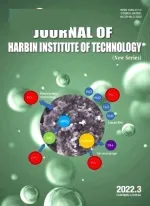 Journal of Harbin Institute of Technology(New Series)2014年3期
Journal of Harbin Institute of Technology(New Series)2014年3期
- Journal of Harbin Institute of Technology(New Series)的其它文章
- Aerodynamic Characteristics of Projectile with Exotic Wraparound Wings Configuration
- Numerical Simulation of High-Speed Water Entry of Cone-Cylinder
- Intelligent Temperature Control System Design Based on Single-Chip Microcomputer
- Influence of Punch Shape on the Fracture Surface Quality of Hydropiercing Holes
- Synchronization of High-order Discrete-time Linear Complex Networks with Time-varying Delays
- Simulation Platform of Underwater Quadruped Walking Robot Based on MotionGenesis Kane 5.3 and Central Pattern Generator
